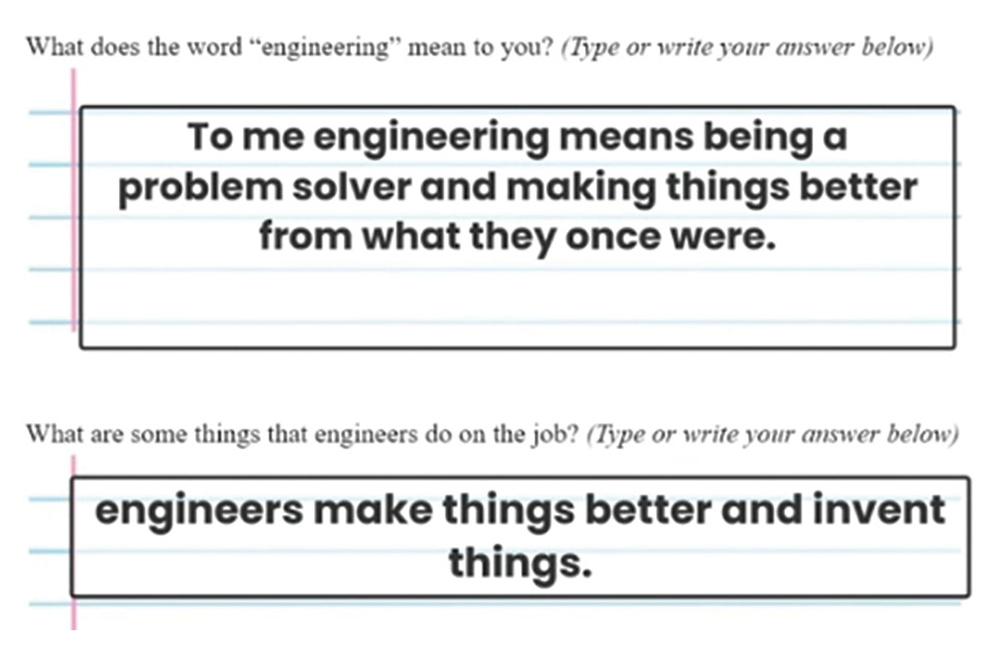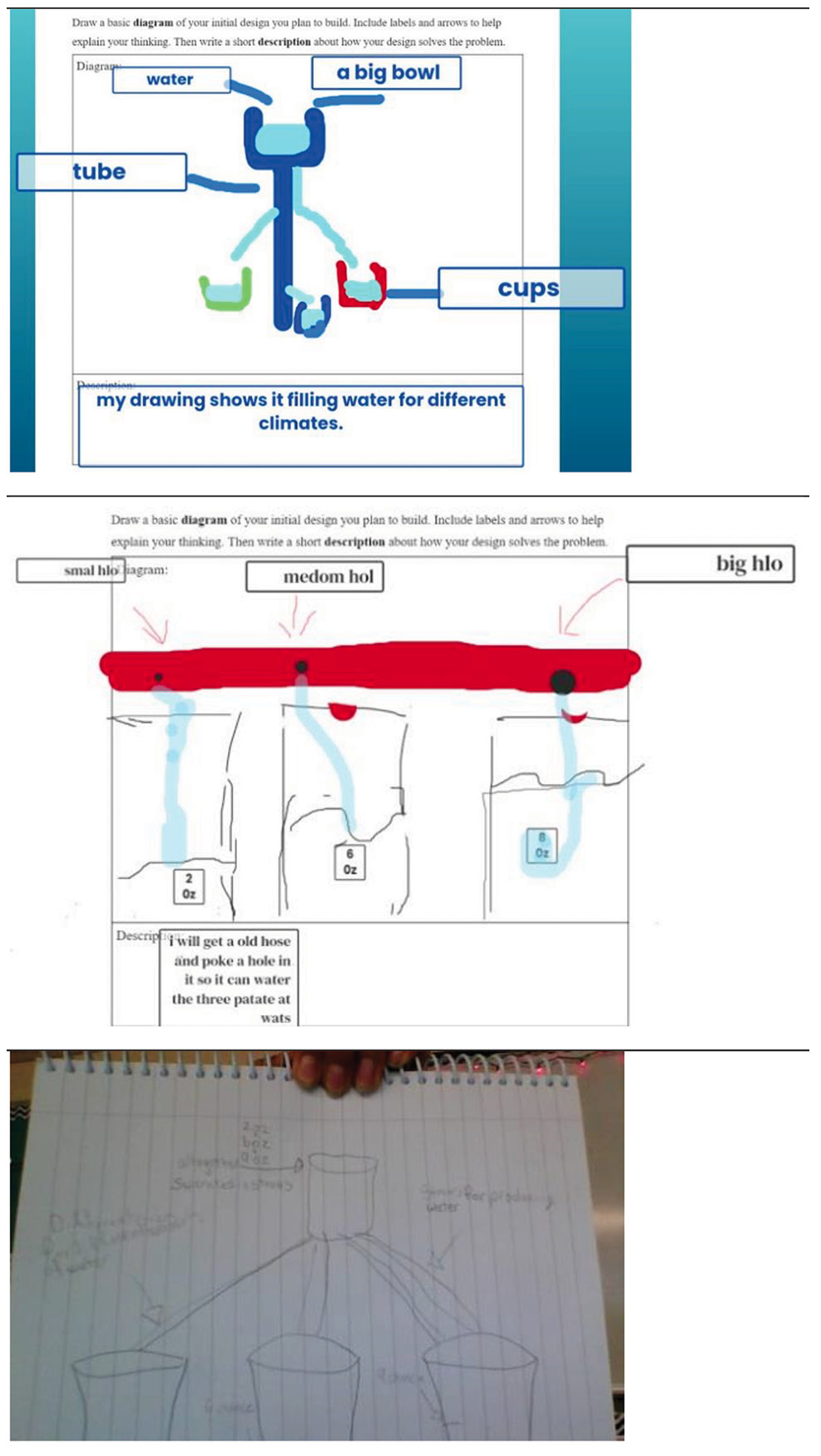feature
Scientifically Modeling Water
An engineering design process unit for fifth graders through in-person and distance learning
Science and Children—May/June 2022 (Volume 59, Issue 5)
By Tina Vo, Rebekah Hammack, and Connie Michael

Samuel Coleridge’s “The Rime of the Ancient Mariner” quotes, “Water water everywhere and not a drop to drink.” This line is about the abundance of saltwater in the ocean but the lack of safe drinking water. More than a century later, this idea has moved onto land. Access to drinking water is becoming more limited as drought persists across continents. While relevant to everyone, this topic is highly visible to students who live on reservations or rural settings and can see the daily and direct impact of water on agriculture and livestock. This article highlights a particularly impacted group of students due to increasing drought conditions and upstream river pollution near their reservation. While there are related water and modeling standards across the K–12 Next Generation Science Standards progression (e.g., ESS-Earth Systems Developing and Using Models), the standards this classroom used focused on promoting student agency in looking for design solutions, showing students they can critically explore and develop engineering solutions within their community. Traditionally, when inquiry-based science investigations are used in the classroom, students are asked to make diagrammatic and physical models. This lets them explore variables in a system (e.g., water systems). Teachers would provide materials, oversee students’ experiments, and provide guidance and feedback supporting students’ learning.
The COVID-19 pandemic gave rise to distance learning, and elementary teachers once again proved how resilient they and their students are. This work highlights one of those teachers’ work. Before the pandemic, Ms. Xavier used the Garden TOOLS curriculum (Ingram and Keshwani 2020), a free resource developed by the University of Nebraska Institute of Agriculture and Natural Resources. This resource focuses on rural settings working on water conservation while using the Engineering Design Process (EDP). This article uses the EDP to frame how Ms. Xavier modified a lesson plan for online delivery, how she used scientific models and modeling to help students communicate their ideas, and how she supported students with different access to resources at home. Ms. Xavier is an experienced teacher who has been working on and with the reservation school for years. She is deeply committed to the community and its elementary school.
Before going into detail about the lesson, there are some essential notes about her classroom. This occurred within a fifth-grade classroom located within a Native American nation in the mountain west. There are many unique and wonderful aspects of this context. For example, a deep commitment to water sustainability and responsible land usage is organically prevalent throughout their conversations and curriculum. Teachers in this district valued and emphasized the importance of the local context within all their lessons, specifically seeking and teaching this concept across multiple content areas. This science lesson is one of many that highlight the importance of local funds of knowledge (Gonzalez, Moll, and Amanti 2006). Table 1 provides an overview of the entire lesson. At the same time, the following sections provide details of how Ms. Xavier has modified the lesson to provide it online (Table 1). Finally, it should be noted that this was many of Ms. Xavier’s students’ first experience with engineering education. Due to students’ inexperience with engineering, online and in-person students started out with unrealistic expectations (i.e., elaborate machines requiring industrial manufacturing and numerous variables) and did not consider constraints. In both cases, Ms. Xavier’s attentiveness to her students’ needs and experiences guided students back to the framework EDP. By the end of the project, students supported peers within their groups to reference the framework, mirroring Ms. Xavier’s language.
Engineering Design Process
We recognize there are many ways of defining the EDP (Hammack and Vo 2021; Moore et al. 2014). For this article, we loosely define it into three phases with multiple sub-phase components. The three major phases include: defining the problem, developing solutions, and optimizing. When defining the problem, it is essential that students and/or teachers clearly define a problem statement, including the final evaluation criteria and the project constraints (limitations). Often, time and budget play a part in this last piece. As students develop solutions, they must research the problem, create diagrammatic models of potential solutions, and discuss variations before prototyping. It is vital that students continually go back to the problem statement, criteria, and constraints throughout this stage of the EDP to ensure the project remains focused on the current issue. Finally, students must optimize their prototypes through testing, evidence evaluation, and iterative improvement. Again, students should be referencing pieces of the prior two phases and making adjustments accordingly. Managing student groups who are asynchronously engaging with this process can be difficult. Hopefully, Ms. Xavier’s classroom example can provide some insight and guidance.
Defining the Problem
In-Person. Before distance learning, Ms. Xavier’s classroom would have started this lesson through the 5E model. First, she would use reflection questions to engage students’ prior knowledge, “What is an engineer? And what do engineers do?” Next, she would present the structure of engineering design and help students explore their personal experiences around water “How do you know if you’re thirsty? How can we tell if a plant is thirsty?” Ms. Xavier would explain a problem with the school garden allowing students to explore and explain their understanding of the problem in small groups. In person, she defined the problem as “a way to provide different amounts of water to plants with different needs. Your goal is to build a system to divide 16 oz. of water into three cups with 2 oz., 6 oz., and 8 oz. of water in each.” This prompt is taken directly from the Garden TOOLS Curriculum.
Online. To begin the same lesson online, Ms. Xavier worked to put the entire structure of the lesson into a Learning Management Software (LMS). Questions meant to engage students’ prior knowledge were presented as prompts for students to fill in. Later, when the class would meet virtually, she would ask the students the same question, knowing that they had filled in the prompts. By having students type out their answers, Ms. Xavier increased student participation, interaction, and focus and provided insight into what students would be bringing into the discussion. From this student’s statement (Figure 1), the teacher drove home the idea of iteration and improvement during the class discussion. Similar information was presented in both online and in-person contexts; however, the online context made more regular reference to the large systems at play. For example, instead of focusing on the school garden, for the online version Ms. Xavier used the larger frame of gardeners and farmers (see Figure 2, modified garden tools curriculum). This framing allowed students to research their community water usage, defining the problem in more relevant terms.

Example of online prompts and student responses.

Example of information provided to students (https://growable.unl.edu).
Traditionally, these conversations would happen in person in real-time. The online act of having students write out their responses provided the opportunity for students to organize their thoughts, share their answers, and stay on task. After committing individual ideas to paper, each group member was given time and space to share their ideas with the rest of the group. Students discussed the potential benefits and challenges associated with each idea. This expectation also set an example that students were ALL expected to share and make space for one another, an important idea to model before breakout rooms. Ms. Xavier used this discussion as a formative assessment of students’ current understanding. Depending on what students were writing and speaking about, she would ask questions to reorient or focus their ideas. For example, when one student struggled to describe how water moved within their community, she asked the group to write a list of places they had seen water (e.g., the river, their kitchens, horse troughs). After making the lists, she asked students to explain how the water got from one place to another. This was one of many ideas online students documented in their small groups. Students were also able to navigate their document, referencing earlier ideas to build off each others’ statements. Ms. Xavier provided students with a supply list this project would use, but students were told not to worry if the materials were not in their homes. Students were privately asked to report if they had access to these materials (i.e., cups, straws, water, paper, scissors, tape). She then ensured that each small group had at least one team member who had access to the needed supplies.
Developing Solutions
Before allowing students to engage in solution development, Ms. Xavier reviewed safety protocols and behavioral expectations for the students. These included being respectful to classmates, wearing eye protection when cutting straws, not playing with or drinking water, and immediately cleaning up any water spills. Additionally, for online students, Ms. Xavier instructed students to only complete the activity with adult supervision. If online students acted as observers (i.e., did not have materials at home), normal classroom safety expectations were required (e.g., respectfulness, participation).
In-Person. In small groups, three or four students were allowed to explore their understanding of the problem and how similar problems have been solved in the past. The teacher outlined the time and materials the class could use to try to meet the goal. Students would each develop models and build prototypes to compare and pick a design to iterate. Students were highly focused on the building. During this time, Ms. Xavier walked around the classroom, formatively assessing students’ talk and reminding them to document their thinking.
Online. Ms. Xavier asked students to engage in personal brainstorming before being allowed to join their small group breakout rooms. Groups of four were allowed to investigate ideas together but asked to individually design ideas around the specified materials list, leading up to a group discussion (Figure 3). Students looked at each model, referencing the criteria and the constraints to develop a single idea to prototype. Only one student was instructed to prototype the combined group idea. Ms. Xavier presented this as part of the EDP, highlighting the importance of a clear model and strong communication. Because not all students could build, discussion and students’ model presentation were prioritized, prompting many groups to create informal notes sheets.

Students’ digital work examples.
Additionally, students were motivated to “wonder,” as students developed ideas individually, eventually sharing with the group. Because these think-group-share activities were virtual, the students were very curious about what other group members were doing, as they could not observe or “peek” at each other’s work as they were developing ideas. This led to more divergent thinking, more attentive observations, and longer, more investigative questions within the group.
Optimizing
In-Person. Students were able to deconstruct individual models to create the group prototype for testing. Once testing began, each group member used the prototype to gather information. Groups evaluated the testing against the problem statement. Then they attempted to redesign their prototype as a group, bouncing design ideas and building pieces as proof of concept. In both in-person and online contexts, the optimization phase continued for the duration of the class, culminating in each group presenting their optimized design to the class.
Online. As only one student was allowed to prototype, experiments were conducted over video. Other students observed, took notes, and asked questions of their teammates in real-time, much like an in-person class. The major difference between in-person and online groups was that online students were asked to revise their model to present cases for new designs. In-person groups were allowed to negotiate in real-time, taking notes as they went. As online groups tested ideas, communication was a challenge; however, students did manage to complete multiple tests. This was more structured than the in-person delivery, as Ms. Xavier was concerned that the student with the materials might take over. Additional structure (e.g., additional whole-group discussions) ensured that multiple perspectives were considered. Ms. Xavier notes that her online students had a tendency to revise through trial and error during their discussions. These students struggled to record their activities as stringently as their in-person counterparts. She attributes this, in part, to distance learning. Normally, she would have multiple ways of reminding students to take notes and record ideas in person. She could see if students were moving on to a new iteration and provide verbal and visual reminders. When relying on an LMS for delivery, these “just in time” reminders were limited.
Virtual Instruction
While there are still many challenges with virtual instruction, Ms. Xavier could see past the ocean of saltwater. She envisioned opportunities for her students to have authentic engagement with model development and the EDP. At no point did this teacher believe that online instruction can substitute for in-person engagement. Rather, this article points to the possibilities and options teachers can consider when required to teach online (e.g., during a pandemic, inclement weather, or long-term student illness). Students quickly recognized the importance of capturing and communicating their ideas through different mediums. Ms. Xavier’s scaffolds and timing afforded students virtual place-based learning opportunities to help motivate and engage students with the project. By the end of this project, students were more aware of the water usage within their community and how engineering design could identify potential solutions. These are meaningful skills that could provide everyone with clean, safe drinking water in the future. ●
Acknowledgment
This material is based upon work supported by the National Science Foundation under Grant Number 1916673. Any opinions, findings, and conclusions, or recommendations expressed in this material are those of the authors and do not necessarily reflect the views of the National Science Foundation.
Online Resources
Tina Vo (tina.vo@unlv.edu) is an assistant professor at the University of Nevada, Las Vegas. Rebekah Hammack (rebekah.hammack@montana.edu) is an assistant professor at Montana State University in Bozeman, Montana. Connie Michael is a nationally board-certified classroom teacher with more than 30 years of classroom experience working in rural Montana with fifth-grade multilingual students.
Engineering Environmental Science Interdisciplinary Elementary Grade 5


